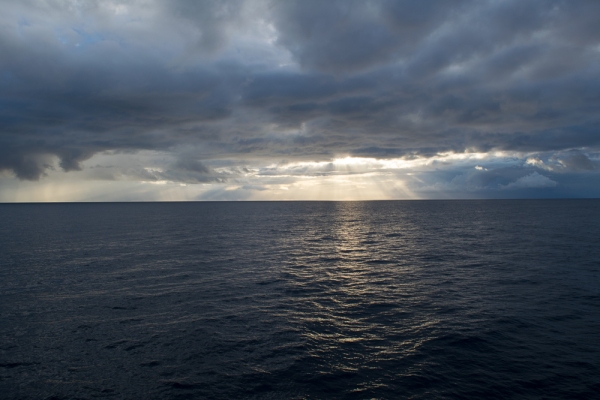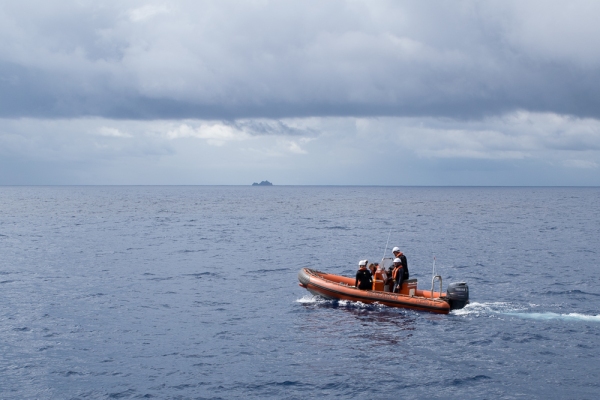After the flurry of activity and excitement when Koha the rehabilitated turtle came aboard, it has been a relatively quiet couple of days. Koha has been quietly sitting in it’s covered box on the deck and having regular swims in the second plastic box to stay hydrated.
It is at least a 48 hour steam from Auckland to Raoul Island, which means two days for scientists to set up laboratory spaces, finalise gear set-up and discuss the logistics of sample processing. We are a full ship with a lot of different objectives, so there will be a lot of working around other people. This will take a lot of cooperation and being considerate of others, so that we all get to achieve what we’ve set out to do.
The expedition has three main objectives: 1) to look at the diversity of seafloor and midwater fish and invertebrates from the Kermadec Ridge and Islands; 2) photograph and biopsy humpback whales and record their song; and 3) look at the genetic connectivity of shallow reef communities between the Kermadec islands.
On board, there are people from six different institutions: NIWA, Auckland Museum, Te Papa, Auckland University, Massey University, the Department of Conservation, The Pew Charitable Trusts and Koha the turtle representing Kelly Tarlton’s sea life aquarium. All of the institutions have slightly different focuses, from mapping the seafloor, photographing humpback whales and sampling fish and invertebrates, from shallow to the deep water. We will be using a wide variety of gear to sample with. We have divers on board who will collect some of the shallow water life, as well as ship based traps, sleds, trawls, nets and a towed camera to sample the deeper sea. This is a very multidisciplinary expedition!
Ever since we departed Auckland we have had two marine mammal observers up in the bridge during the daylight hours keeping a look out for any whales, dolphins or other things of interest. So far, a number of whales have been seen, and a sun fish.
We have been very lucky with the weather so far – calm seas and light winds. This is the best way to start a voyage. It gives us all a chance to ease into the trip and get used to the movement of the ship with a low chance of seasickness.
One of the things we have to be aware of when at sea is the weather, which affects what we can do and when. There are times when it is too rough to sample and all we can do is wait out the weather, and there are other times when we can seize the opportunity of good weather and ship placement and do a bit of opportunistic sampling. This is the case today – we have wonderful weather, and we were steaming past L’Havre Rock during daylight hours, so we’ve taken the opportunity to send the divers over the side and get samples from a rarely-sampled site.


